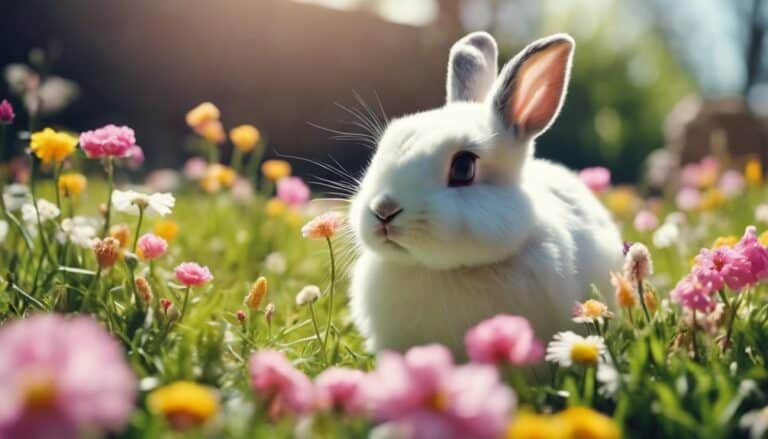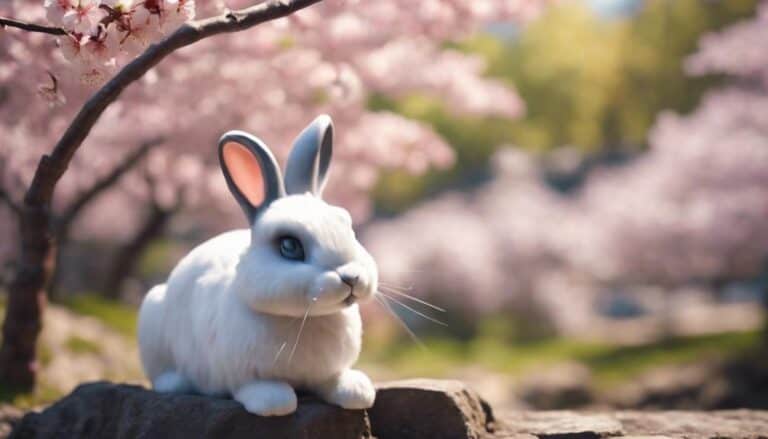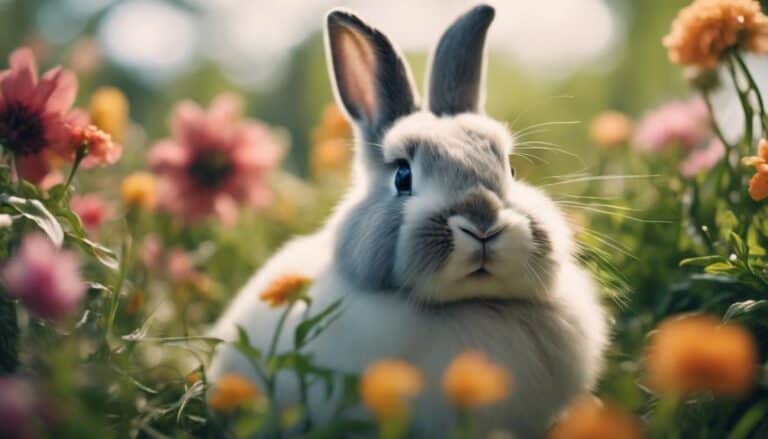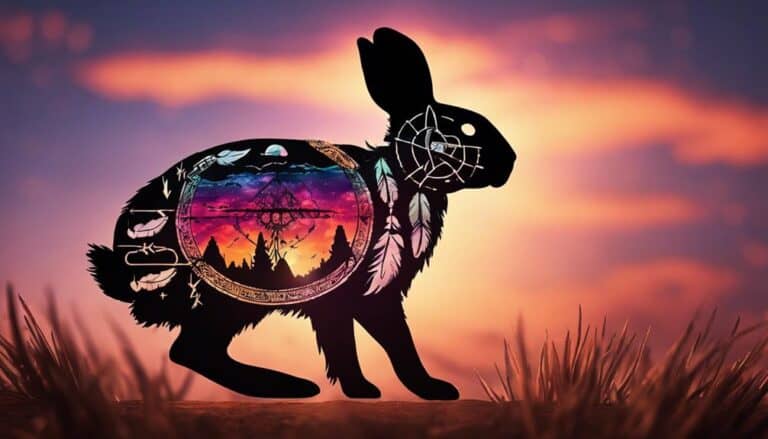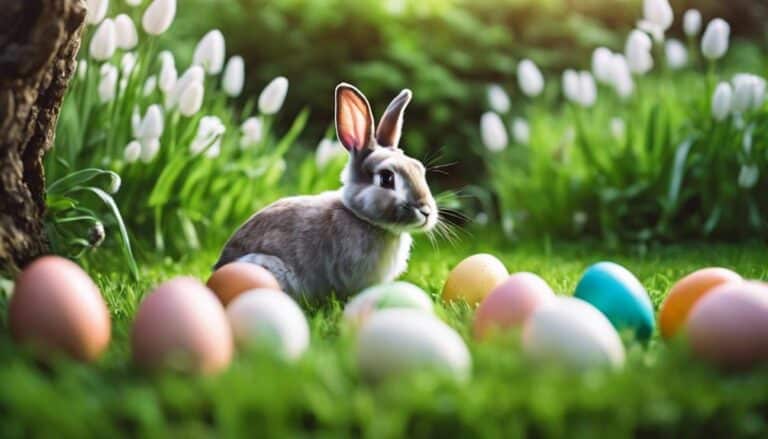In ancient folklore, rabbits have been associated with a multitude of symbolic meanings that transcend space and culture. From their representation of femininity and rebirth in various mythologies to their ties with the moon and its cycles, rabbits hold a rich tapestry of symbolisms that have intrigued civilizations for centuries.
However, the depth and complexity of what rabbits symbolize in ancient folklore go far beyond mere surface interpretations. As you explore the intricate layers of symbolism woven around these elusive creatures, you will uncover a fascinating journey into the spaces of mysticism and tradition that have stood the test of time.
Contents
Key Takeaways
- Rabbits symbolize fertility, femininity, and rebirth in ancient folklore.
- They bridge earthly and spiritual realms, representing interconnectedness and abundance.
- Across cultures, rabbits signify longevity, divinity, and cyclical life.
- In contemporary interpretations, rabbits reflect adaptability, resilience, and transformative cycles.
Origin of Bunny Symbolism
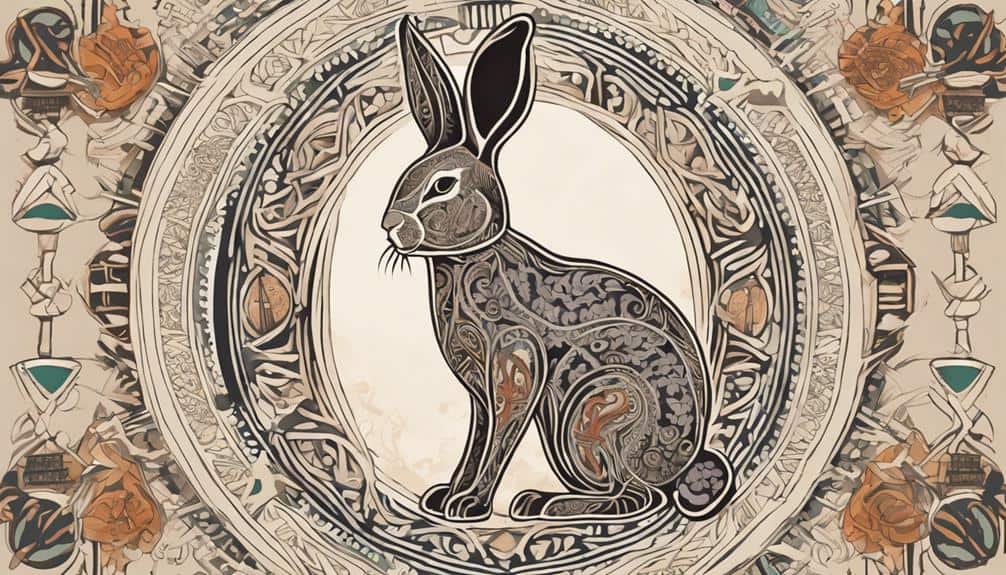
The emergence of bunny symbolism in ancient folklore can be traced back to the rich tapestry of mythologies across various cultures, each imbuing these creatures with profound significance related to fertility, femininity, and rebirth. In ancient times, the rabbit wasn't merely a creature hopping through the fields; it held a deeper symbolic meaning intertwined with the mystical and the magical. Associated with the lunar cycle and the goddess, rabbits were revered for their role in representing themes of longevity and transformation.
Within the ancient folklore of diverse civilizations like Chinese, Egyptian, Greek, Roman, Teutonic, and Celtic traditions, the rabbit stood as a powerful symbol of interconnectedness with nature and the cycles of life and death. Artists and writers of antiquity depicted these creatures in ways that highlighted their mystical aura and their close connection to the spiritual world. The symbolism of the rabbit in ancient folklore transcended mere physical existence, delving into the worlds of the unseen and the divine.
Cultural Interpretations of Rabbits
Rabbits hold a profound symbolic significance in various cultural narratives. They embody traits like agility, cunning, and life's cyclical nature. Through myths, rituals, and folk tales, these creatures often serve as messengers, bringers of abundance, and representations of femininity and fertility.
Across different societies, the diverse interpretations of rabbits reflect timeless themes of rebirth, lunar connections, and the intricate dance of life's ebbs and flows.
Symbolism in Myths
In ancient folklore worldwide, the symbolism of rabbits plunges deep into themes of fertility, femininity, and rebirth, resonating with cultural interpretations that transcend time and borders.
- Rabbits symbolize fertility, femininity, and rebirth in various myths.
- Hares are linked to the lunar cycle, embodying power, transformation, and mystery.
- Greco-Roman and Teutonic mythology associate rabbits with love, abundance, and spiritual transformation.
- Shifting to Christianity, rabbits lost their sacred status and were often viewed negatively.
These interpretations showcase the diverse roles rabbits play in myths, from representing life and femininity to undergoing transformations across different cultural narratives.
Ritual Significance
Within ancient folklore's rich tapestry, the ritual significance of rabbits emerges as a profound connection between earthly practices and spiritual domains, weaving together themes of fertility, prosperity, and mystical communication.
The hare, often associated with the moon, serves as a messenger bridging the human world and the spirit world, embodying qualities of fertility, rebirth, and divination.
In various cultural interpretations, rabbits symbolize prosperity and abundance, their presence in rituals signifying protection and the cyclical nature of life.
Through their role in ceremonies, rabbits are revered as symbols of nature's mysteries and the interconnectedness of all living beings, offering insights into the spiritual significance of these beloved creatures in ancient folklore.
Folk Beliefs and Tales
Emerging across diverse cultural landscapes, folklore surrounding rabbits intricately weaves tales of trickery, wisdom, and profound symbolism.
- Hares were associated with femininity, fertility, and rebirth in many cultures.
- Native American folklore often features rabbits in trickster tales.
- Carvings of rabbits eating symbolize abundance and fertility.
- Brer Rabbit, a prominent figure in African American folklore, embodies wit and cleverness.
Rabbits and hares were sacred to Aphrodite, reflecting their association with feminine power and fertility. The Moon Rabbit legend in East Asian folklore symbolizes selflessness and sacrifice. Across the world, from Native American stories to Brer Rabbit tales, these creatures serve as both playful tricksters and wise guides, enriching cultural narratives with their multifaceted symbolism.
Rabbit Symbolism in Art
In art, rabbits aren't merely animals but symbols laden with meaning. Artists have masterfully crafted rabbit depictions across various mediums to convey cultural interpretations and symbolic representations.
These artistic renditions of rabbits serve as potent visual metaphors for fertility, rebirth, and the mysteries of life.
Artistic Rabbit Depictions
Artists throughout history have masterfully captured the essence of fertility, rebirth, and mystery through their diverse rabbit-inspired creations, solidifying the enduring significance of rabbit symbolism in the domain of fine art.
- Rabbit sculptures by Jeff Koons and Barry Flanagan showcase the popularity of rabbit imagery.
- Rabbit masks in African art symbolize agility and respect in cultural rituals.
- Rabbit imagery in fashion photography highlights the versatility of rabbit symbolism.
- Rabbit characters in Western pop culture offer diverse interpretations of rabbits in art, leaving a lasting impact.
Cultural Rabbit Interpretations
With deep-rooted symbolism spanning across diverse ancient cultures, the enigmatic presence of rabbits in art transcends mere depiction, embodying profound meanings of fertility, rebirth, and spiritual interconnectedness.
From Bugs Bunny to the Easter Bunny, these cultural icons reflect the enduring significance of rabbits in human consciousness.
In art, rabbits often symbolize the Hare in the Moon, representing the lunar cycle and the mystical connection between earthly dominions and the divine.
Depictions of rabbits eating grapes signify abundance and prosperity, particularly during celebrations like the lunar new year.
Artistic representations of rabbits in folklore and mythology highlight the sacred connection between hares and the cycles of life, death, and rebirth, underscoring their role as powerful symbols of fertility and renewal.
Symbolic Rabbit Representations
Cultural rabbit interpretations seamlessly give way to the enchanting domain of symbolic rabbit representations in art, where these creatures embody profound meanings of fertility, rebirth, and spiritual interconnectedness.
- Rabbits symbolize the lunar cycle and its connection to the moon goddess.
- Artistic depictions portray rabbits as symbols of fertility and fecundity in nature.
- The representation of rabbits in art signifies protection and transformation.
- Rabbits in various mythologies symbolize femininity, abundance, and the cycle of rebirth, reflecting their enduring significance in folklore.
Supernatural Associations With Bunnies
In ancient folklore, bunnies served as messengers bridging the human and spirit domains, embodying the essence of the Great Goddess and wielding mystical powers. These enchanting creatures were deeply intertwined with the mysteries of the lunar cycle, symbolizing fertility and acting as conduits for divine communication. Often depicted as androgynous beings, bunnies encapsulated both masculine and feminine energies, embodying wisdom, intuition, and the interconnectedness of all life.
Across various worldwide mythologies, bunnies were revered as messengers of the spirit world, carrying messages of significance and guidance to those who were open to receiving their mystical insights. Their supernatural associations were vast and profound, transcending mere physical existence to tap into worlds beyond the ordinary human perception.
Through their ethereal presence and symbolic significance, bunnies continue to inspire awe and wonder, inviting us to explore deeper into the worlds of the unknown and embrace the magic that surrounds us.
Rabbit Symbolism Across Continents
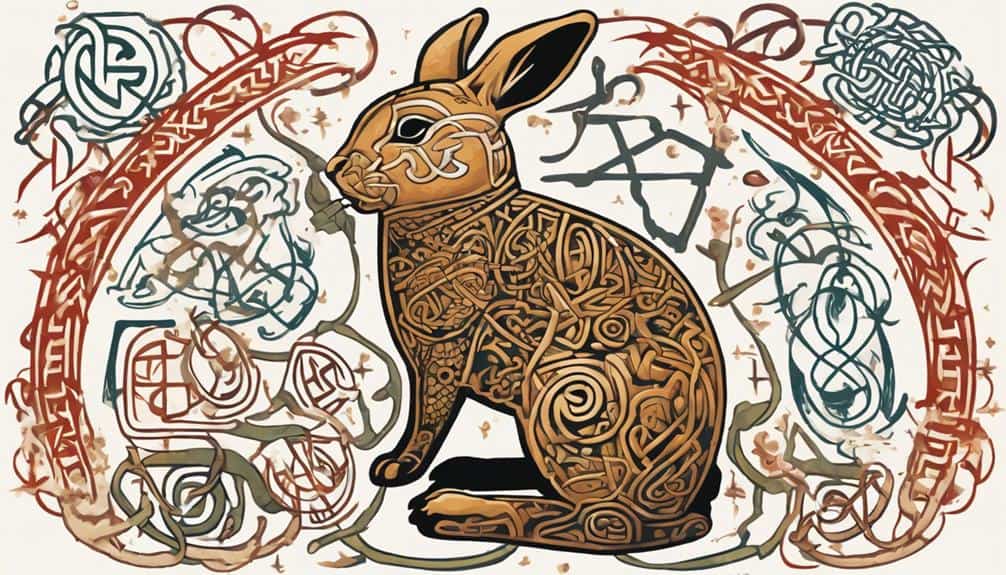
Symbolizing profound meanings across diverse cultures and traditions, the rabbit holds a significant place in the tapestry of global symbolism. Across continents, rabbits embody various symbolic interpretations deeply rooted in ancient folklore:
- The association of rabbits with fertility and rebirth is a prevalent theme in many cultures worldwide.
- In Chinese tradition, rabbits symbolize longevity, reflecting the belief in their connection to a prosperous and enduring life.
- Ancient Rome perceives rabbits as a symbol of fertility, emphasizing their role in the cycle of life and growth.
- Egyptian mythology intertwines rabbits with divinity and protection, highlighting their sacred significance in ancient beliefs.
These interpretations exemplify the rabbit's versatile symbolism, ranging from themes of femininity and the lunar cycle to concepts of rebirth and longevity. Through depictions in art and manuscripts, rabbits continue to serve as powerful symbols that transcend geographical boundaries, enriching the collective folklore of humanity.
Contemporary Rabbit Symbolism
Embodying a contemporary essence of interconnectedness and adaptability, the symbolism of rabbits continues to resonate across modern narratives with nuanced layers of meaning.
In today's context, rabbits are seen as guardians of all wild, representing a connection to untamed, wild places where nature thrives. They're often associated with the lunar, embodying the transformative cycle of life as they navigate the cycles of the moon.
Just as in ancient times, rabbits in modern symbolism offer a sense of divine protection, symbolizing rebirth and protection in the face of life's challenges. Their enduring symbolic associations with fertility and longevity make them powerful symbols of life's resilience and continuity.
In a fast-paced world, the rabbit's symbolism reminds us of the importance of embracing change, adapting to new environments, and finding strength in the cyclical nature of existence.
Frequently Asked Questions
What Does the Rabbit Represent in Mythology?
In mythology, the rabbit embodies fertility symbolism, lunar connection, and the trickster archetype. It serves as a symbol of rebirth, a sacred animal, and a luck charm. The rabbit is a moon deity, a transformation symbol, an earthly messenger, and a mythological creature.
What Are Rabbits an Ancient Symbol Of?
In ancient beliefs, rabbits symbolize fertility, lunar connection, and trickster archetype. Their burrowing habits relate to moon cycles. They hold deep cultural significance and are messengers between dimensions. Embodying symbolic meanings, they enrich folk beliefs with their mysterious essence.
What Is the Spiritual Significance of a Rabbit?
In your spiritual journey, a rabbit represents inner wisdom, fertility, and a strong connection with nature. Its speed, agility, and lunar ties signify rebirth and regeneration. Embrace its playful innocence, trickster archetype, and guidance as your intuition guide and gentle protector.
What Is the Folklore of Rabbits?
In folklore, rabbits embody cultural beliefs, folk tales, and superstitions. They hold symbolic meanings in ancient traditions, legends, and magical beliefs. Rabbit folklore intertwines with mythical creatures, offering insights into animal symbolism and the mystical world.
Conclusion
To sum up, rabbits have long been symbols of femininity, fertility, and rebirth in ancient folklore. Their significance transcends cultures and time periods, embodying themes of mystery, wisdom, and nature.
For example, in modern literature, the character of the White Rabbit in Lewis Carroll's 'Alice's Adventures in Wonderland' serves as a symbol of curiosity and the journey into the unknown. Rabbits continue to enchant and inspire, weaving their timeless symbolism into the fabric of human imagination.

